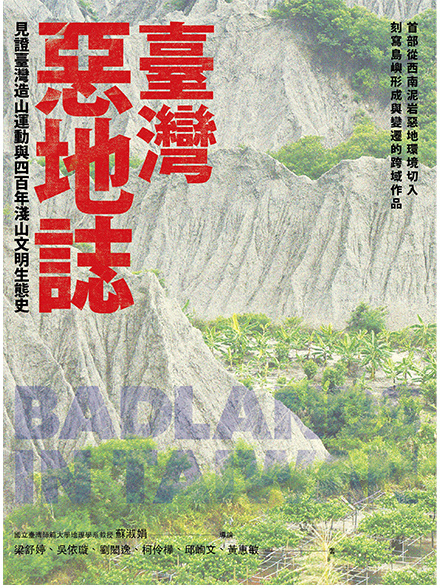* 2023 Golden Tripod Award
* 2023 Taipei Book Fair Award
Seemingly desolate, Taiwan’s badlands are in fact teeming with life. Over hundreds of years, the people who live there have found ways to exist in harmony with the natural environment. Their story has the power to reach beyond Taiwan and inspire the whole world to think about environmental resilience.
Legend has it that the mudstone badlands in southwestern Taiwan, coated in a thin layer of powdery salt, reflect moonlight. The barren land then turns a silvery white, like the surface of the moon – hence the local name for these places: “moon worlds”. Close to twice the size of Guam in area, the southwest badlands are known for producing guavas and green jujubes, despite a relatively sparse population. How is this agricultural success story possible? The authors of Taiwan’s Badlands tell readers the story of these mudstone badlands and the people who live there.
Divided into six parts, the book introduces the geological formations and diverse landscapes of the badlands and the area’s plant and animal ecologies, examines how human settlements have developed in response to environmental constraints over the past four centuries, and then looks at how those same environmental constraints led communities to develop unique agricultural, culinary, and religious cultures – the previously mentioned guavas and green jujubes, for example, are agricultural products farmers grew once they understood the characteristics of the local soil. Finally, the book discusses the local environmental movement and civic science education, the development of geoparks, and the ecological conservation activities initiated by local residents.
Su Shew-Jiuan, one of the book’s authors, believes that people living in the badlands aren’t trying to conquer nature but instead recognize the land’s limits. They then practice sustainable development in the spirit of “land stewardship”, an attitude fundamental to environmental resilience in the face of change. Their attitude to life can also help us to think about ways to deal with the vagaries of climate change, and thus inspire us to live in harmony with the natural environment.
